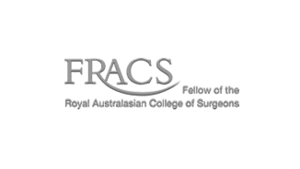Prostate cancer treatment is varied for a reason. No one man has the same cancer and the same set of circumstances as another.
Here at the Urology Centre, treatment is based on 3 things :
Having access to all the treatment choices enables us to help you take the most appropriate path for you.
Active surveillance is a legitimate and safe way of managing some prostate cancers. Some prostate cancers are believed to never affect the quality or quantity of a man’s life, either because it is such a mild cancer, or that there are other more urgent medical issues that pose a far greater risk.
This doesn’t mean that we simply forget about it. It involves a strict protocol of ongoing checks to ensure that any changes are detected and acted upon if required.
Dr Awad has been a long term advocate of Active Surveillance. It has the benefit of minimising overtreatment and maintaining men’s quality of life.
Dr Awad has been an active contributor to the multinational PRIAS study (https://www.prias-project.org) for active surveillance. This is the world’s largest study on active surveillance.
Removal of the prostate gland to treat prostate cancer can be performed by various techniques. Robotic prostatectomy is a form of keyhole surgery to remove the prostate gland, whilst minimising incision size, blood loss and hospital stay.
The prostate gland is a deep pelvic organ and can be difficult to access. Use of the daVinci robotic system allows greater ease of access to this organ, using maginification up to 12x, with 3D images and micro instruments, which replicate the surgeons hand movements. This helps in the safe and complete removal of the prostate, whilst preserving the delicate structures, such as the nerves for erection and the urethra, surrounding it.
Robotic radical prostatectomy is a new advanced laparoscopic approach that overcomes the limitations of the traditional open as well as the laparoscopic approach. It enables the surgeon to perform complex surgery through tiny incisions, with precision and ease, improving the outcome and reducing complications.
Robotic radical prostatectomy involves two machines, a control unit or the surgeon’s console and a patient unit. The surgeon sits at the control unit, away from the operating table, and controls the movement of the four robotic arms of the patient unit, present near the operating table. One of the robotic arms holds and positions a 3D high definition camera through the incision in the operated area providing images of the operation site to the surgeon at the control unit. These images are high resolution 3D images. The other three robotic arms are used to hold small miniature instruments, which are used for the surgery. These instruments are introduced through the tiny (1-2cm) incisions over the patient’s abdomen.
Brachytherapy is a type of radiation therapy (radiotherapy) in which a radioactive source is placed directly into or next to an organ or tissue with a cancer in it. In the case of prostate cancer, one of two main types of brachytherapy may be an option – either low dose rate (LDR) or a high dose rate (HDR). ‘Dose rate’ refers to the speed at which the dose is delivered, not the actual dose itself. Brachytherapy may not be available in all hospitals and is not suitable for all prostate cancers.
LDR brachytherapy or ‘seed’ implant involves the insertion of permanent radioactive sources directly into the prostate. These sources or ‘seeds’ give off a localised radiation to the entire prostate with the aim of destroying the cancer cells. The radiation is limited to the prostate and only a few millimetres around it. LDR brachytherapy is generally a treatment for men with prostate cancer which is completely contained within the prostate gland. Placement of ‘seeds’ requires a procedure under anaesthetic that typically takes an hour or two and discharged the next day.
This type of treatment tends to have the least impact on men’s quality of life and allows them to return to their normal activities quickly. It has the least impact on a man’s erections.
However, not all men are suitable for brachytherapy , either because of their pre-existing urinary difficulties or the type of cancer they have.
Dr Awad has been performing Prostate Brachytherapy (LDR) implants in Port Macquarie since 2013, in conjunction with Dr Joseph Bucci, from St George Hospital in Sydney https://www.cancer.com.au/our-doctors/radiation-oncologists/dr-joseph-bucci. Dr Bucci has one of the largest brachytherapy experiences in the country.
http://www.scielo.br/img/revistas/ibju/v42n5//1677-5538-ibju-42-05-0906-gf04.jpg
IMRT is a type of external beam radiation therapy. With IMRT your doctor uses a computer to plan the exact dose (or amount) of radiation that is aimed at your prostate cancer.
The computer uses information about the size, shape, and location of your prostate cancer to figure out how much radiation is needed to kill your prostate cancer cells.
IMRT uses high doses (or amounts) of radiation to kill your prostate cancer cells while protecting the healthy cells that surround your prostate cancer.
This is done by Associate Professor Tom Shakespeare (http://urologycentre.net.au/about-us/our-team/associate-professor-tom-shakespear/), who has worked with Dr Awad since 2008.
IMRT is often given in combination with Androgen Deprivation Therapy (ADT). Dr Awad assists in the delivery of IMRT by implanting gold seeds in the prostate.
These seeds act as fixed markers, allowing accurate targeting of the prostate. This maximises the dose to the prostate whilst minimising damage to surrounding tissues.
Dr Awad also implants a gel, called SPACE OAR. This 2 part gel is injected between the rectum and the prostate and is reabsorbed by the body over a 6 month period.
It helps lift the prostate away from the rectum, thereby minimising the risk of damage to the bowel. http://www.beckerstudio.com/wp-content/uploads/2017/11/3D_Augmenix_Anim_01.jpg
See the news story about robotic surgery now at Port Macquarie Private Hospital.





